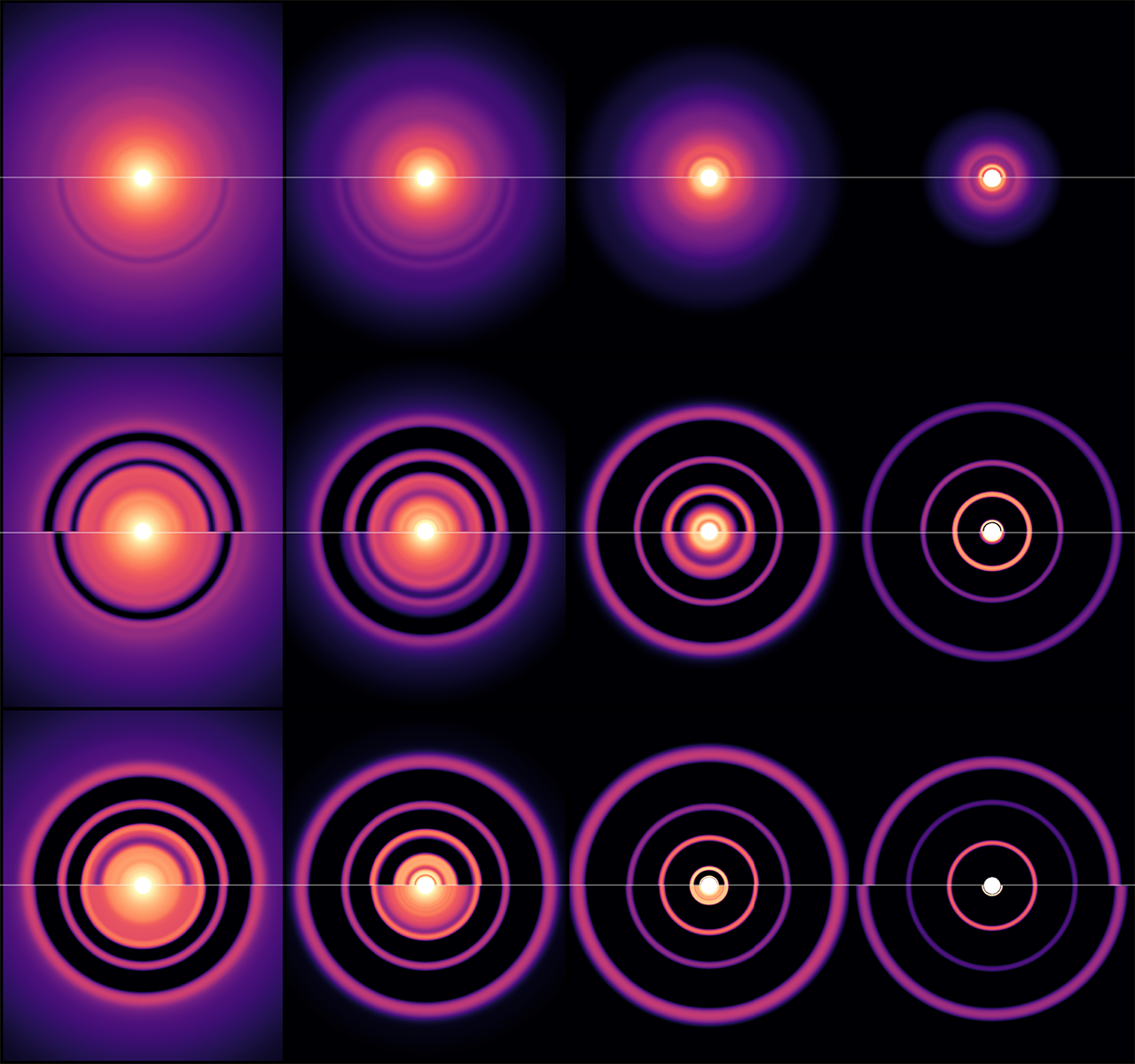The dusty cloud of gas surrounding a young star forms a protoplanetary disk, inside of which planets are born. As planets form they carve out annular 'gaps', commonly visible in dust emission. Such perturbations in the disk produce in-plane radiative cooling effects, which alter the propagation and dissipation of density waves. This visualization shows synthetic dust continuum emission, in terms of the brightness temperature relative to the gas temperature at the orbital radius of the planet. The different rows correspond to different planet masses, increasing downwards; the different columns show increasing planet orbital radii (from 10 AU to 100 AU, from left to right). Every panel is split in half, where the top shows the result for a locally isothermal approximation in the simulation, while the bottom half shows the result with the inclusion of the more realistic radiative cooling model.
Methods: FARGO3D code





